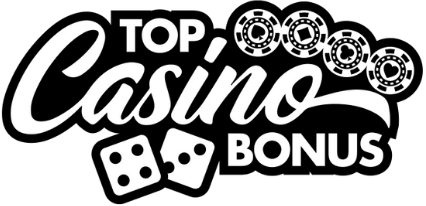Best craps strategies for beginners
Every time I hear a greenhorn tell me they’re “feeling lucky” before tossing the dice, I sigh and take a step back. Luck has some role in craps, sure, it does, but relying solely on it in this game is like trying to steer a ship with a piece of string. If you want to build real consistency, you need a strategy forged through practice, probability, and sound judgement. Let’s skip the hopeful flailing and dig into the best strategies for beginners who actually want to stick around the table longer than a coffee break.
Table of contents
Understanding the flow of the table first
You can’t just walk into a craps table, throw a bet on the center, and expect miracles. The action follows a flow: a come-out roll to establish the point, followed by additional rolls as the shooter tries to hit that point again. If you’re still foggy on how this all works, I recommend brushing up with a reliable beginner’s guide to craps before attempting to implement any strategies.
Recognize what bets are actually worth your chips
The biggest mistake newbies make? Betting on every square inch of the table because it looks colorful. But craps is a game with a defined edge on every bet, some edges are razor-thin, others are blunt instruments. Avoid complex bets like “hardways” or “any seven” until you fully understand the odds. Start instead with what we call “true percentage plays.”
The pass line and don’t pass: foundation stones
If you take just one thing away from this page, let it be this: the pass line and don’t pass bets offer the best odds for beginners and are the core of any rugged craps strategy. These bets have a house edge of just 1.41% and 1.36%, respectively. That’s about as lean as it gets in casino terms.
Why the pass line is the table’s handshake
The pass line bet is like showing up to a job site with a firm handshake. It sets your tone. Place this bet before the shooter’s come-out roll. If they roll a 7 or 11, you win. Snake eyes, 3, or 12? You’re out. But if the shooter lands 4, 5, 6, 8, 9, or 10, that becomes “the point,” and now they must roll it again before a 7 appears. Veteran play? Always back up your pass line with odds bets for better payouts and zero house edge.
Don’t pass: the contrarian’s friend
This one makes you an instant heel at the table, betting against the shooter. The casino edge is slightly lower than pass line. You win on a come-out roll of 2 or 3, push on 12, lose on 7 or 11. Once the point is set, you want a 7 to show up before the point does. It takes grit to go against the tide, but it’s a steady path for measured risk-takers.
Adding the odds bet correctly
Now we’re starting to separate the hobbyists from the students of the game. The odds bet is the most criminally underused part of beginner play. Yet it’s exactly where savvy players press their advantage. After the shooter sets the point, you can place an additional bet behind your pass or don’t pass, this is the “odds” bet, and it carries no house edge. That means you’re betting with true mathematical fairness.
What multiple should you stake?
This depends on the casino you’re playing in. Some joints allow 2x odds, others 3x, 5x, 10x, even up to 100x in the rarefied rooms. The key idea? Always take maximum odds your bankroll allows. If you’re playing with a lean purse, go for modest flat bets and stretch your odds where you can. Think of it like using the proper torque on a wrench, too little and it slips, too much and it cracks.
Come and don’t come bets: expanding your footprint
Once your first point is established via the pass line, you don’t just sit idle. That’s where come and don’t come bets mirror the pass/don’t pass logic and allow you to diversify your action. Essentially, they’re like starting a brand-new round for yourself within the same game cycle. Layering these bets with odds slowly builds a lattice of controlled risk across the board.
Rhythmic betting and bankroll discipline
One of the old-timers I learned from used to say: “Bet like a metronome, not a jazz drummer.” That advice has stuck with me. Stick with consistent bet sizes. Don’t swing your wager amounts to chase a feeling. Fix your base bet and just add odds. I’d bet five times out of ten that undisciplined betting is why most beginners flame out in twenty minutes.
A word on betting systems: buyer beware
The internet’s full of systems, Martingale, Iron Cross, Whirlwind Strategy… most of ’em are fluff. What you’re looking for isn’t a hack, it’s a method. And methods are built on mathematics, not wishful thinking. You can’t beat fixed odds with voodoo. If you’re truly interested in where modeling and algorithms do matter, I’ve seen more grounded innovations in platforms powered by Yggdrasil or WMS software, but when it comes to craps, stick to logic and numbers.
Choosing where you play matters more than you think
Not all tables are created equal. Some carry worse odds on proposition bets, others lower maximum odds on pass line. Online environments can be safer for controlled practice, especially within casinos that offer authentic engine-simulated craps by studios like Thunderkick or Red Tiger Gaming. I’ve scrutinized their random number mechanics, and they model physical-table physics better than most assume.
Play slow, log your rolls
This one’s dull but builds muscle, document every session. Roll-by-roll logs show patterns in your decision-making that memory smooths over. Write down every mistake, hesitation, and misfire. Once you build your own database of errors, improvement becomes measurable. Think of it like sharpening your ax before every job.
The long-game mindset
Craps isn’t a sprint. It’s a war of attrition between your discipline and the casino’s margin. Don’t try to win big every session, instead, aim to survive and thrive across more rolls, more tables, more months. Let precision replace impulse. Focus on the bedspring-solid principles: smart bets, max odds, consistent stake sizes. The flashier stuff can wait.
In this trade, you earn your knowledge at the grindstone, not through shortcuts. Build your foundation right and, over time, your intuition will sharpen like a carpenter’s favorite plane, worn smooth by knowing hands. Keep your strategy crisp, your emotions in check, and your eyes on the dice. That’s the real game.





0 Comments